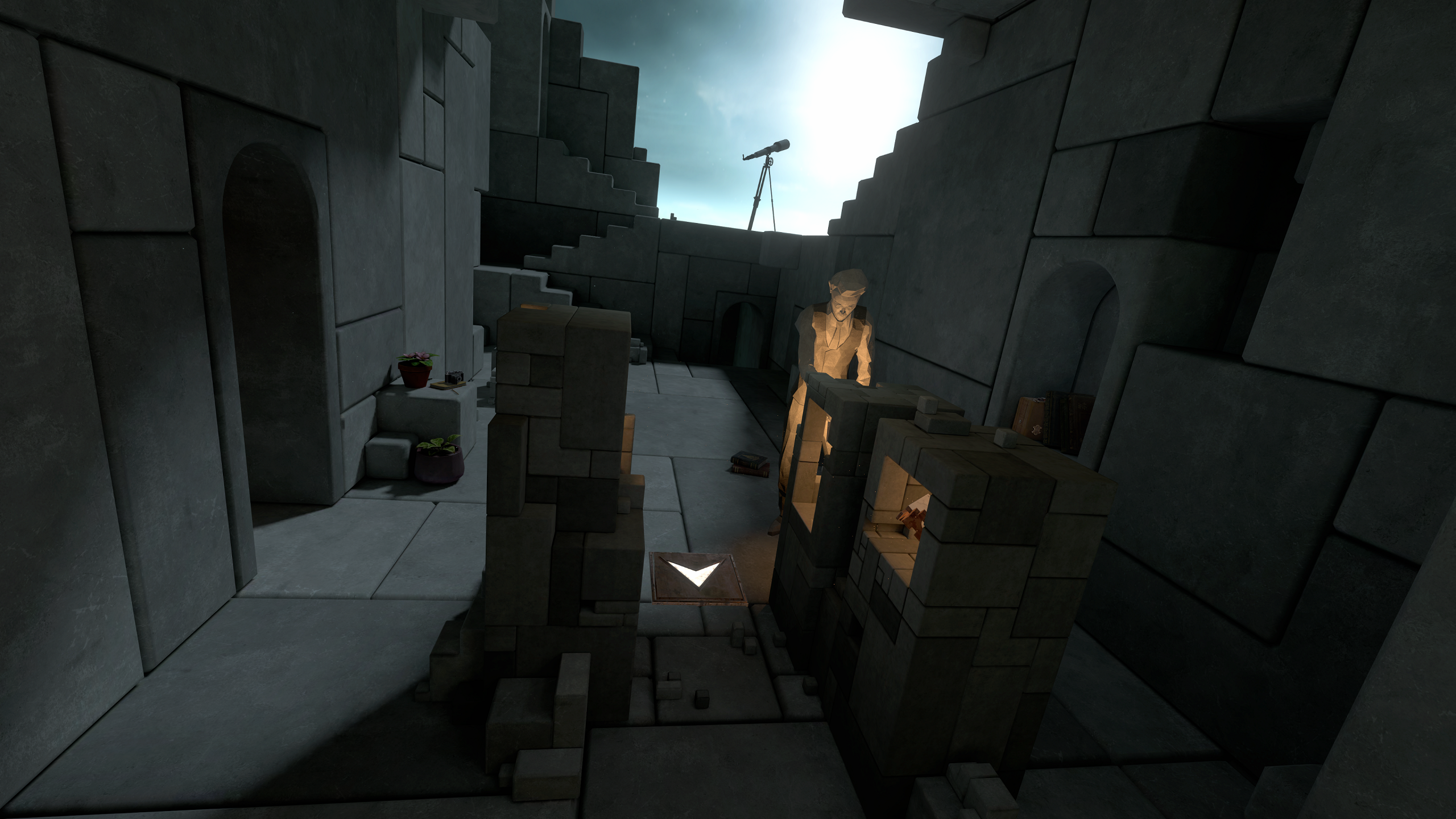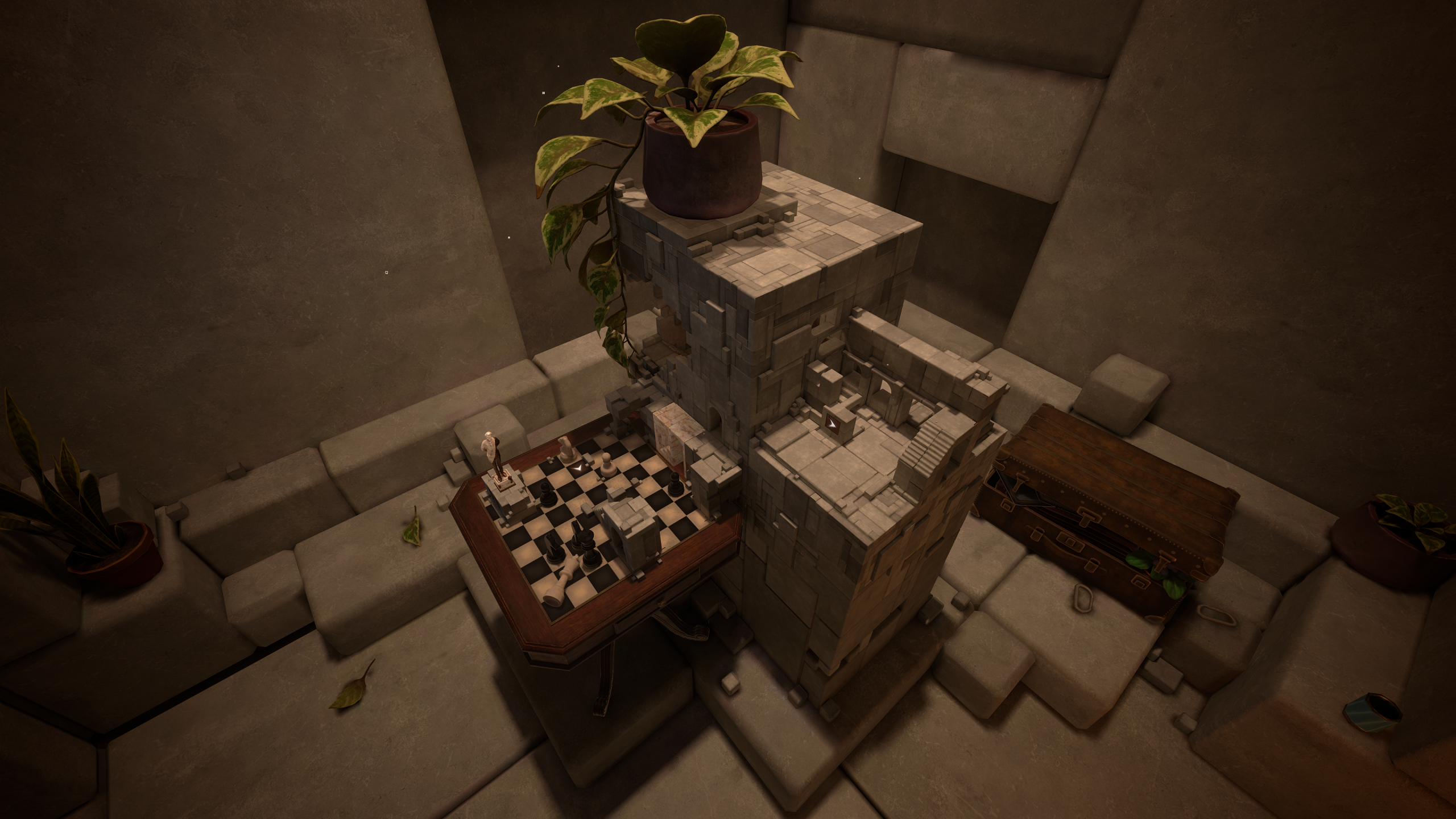
Listen to The VRverse Podcast


Review: Infinite Inside
- July 8, 2024
- 9:00 am
- Standalone/PSVR2
When the reveal trailer for Infinite Inside dropped I was curious about what the game was going to do and how it was all going to come together via the Plinth like puzzles. I have now experienced everything it offers, the question is have Maze Theory came up with something special?

Release Date: July 12th 2024
Developer: Maze Theory
Publisher: Maze Theory
Price: US $12.99
Reviewed On: Meta Quest 3/PlayStation VR2
* Access Provided For Review *
A Secret Society
The game does tell a story but without the blurb provided by the games page on the Meta store I am not sure if I would have picked up on this. While playing through the labyrinths inside of the Plinth you do see echoes of explorers of the past which will guide you, as you assembles keys to unlock mysteries of a secret society committed to maintaining the balance of Order and Chaos.
The Keys To Mystery
Each chapter follows the same progression system, explore the Plinth that grows out of the floor and then going inside of Plinth and exploring that part of the interior locating all the key pieces. Then you will return to the Plinth construct the key and place into the slot and it will transform the Plinth for you to go again until you have all the keys needed to complete that Plinth.
As you would expect with this sort of game the further you get the more difficult it becomes to find the pieces and more complex constructing the keys become. However, with Infinite Inside although it increases, it is done at a good pacing, so it never seems to hit you with a major difficulty spike.
The keys you will be constructing are shapes, and as you progress they get more pieces and more difficult and intricate shapes. These keys are 3D geometric puzzles, that you can hold and manipulate to get them to fit together. Normally I am not a fan of these sort of puzzles, but I really did enjoy trying to figure out the ones in Infinite Inside.
Infinite Inside does have a MR mode for the Meta Quest, which will see the Plinth come out of the floor in your playspace/room. It will grow out of the floor for you to manipulate by grabbing and turning it in your space. Once you move into the Plinth it goes into Virtual Reality mode, due to the way this element of the game works. The MR mode is a nice edition but personally, I just played most of it in VR rather than using the MR element. As well as MR they also support hand-tracking, which I gave a little go and it does work well and I didn’t face any glaring issues with it but again, personally I’d rather play with a controller.
When doing the Plinth’s you can use Room Scale to move around them rather than turning them with your hands. Which if you have the space to do so, this can be very immersive especially if playing MR mode and walking around your actual room. However, this option is disabled once inside of the Plinth again like the MR mode. While inside of the Plinth you will be grabbing orbs to teleport you to that point, and then you can either physically turn or snap turn in ninety-degrees increments.
I did find with the PSVR2 version of the game, the interaction for grabbing seems to work at times and not on others, and when turning and teleporting you have to recenter your placespace quite often. Issues I did not have on the Meta Quest 3 version, so hopefully a patch can fix these issues on PSVR2.
Simple Is Sometimes Enough
The team at Maze Theory have gone with a solid aesthetic throughout the whole game. Which brings it all together perfectly never mind what mode you play it in. As previously mentioned you can play with the Plinth in your own playspace via MR, but if you decided to do it all in VR, this will grow in a very clean and detailed looking virtual room that will keep you immersed. With the Plinth’s being made of stone, it only makes sense when you go into them it’s all similar looking stone again, but a lot bigger in scale. However, what I loved inside of the Plinth it made me think of Escher’s staircase and my favorite movie Labyrinth. It’s all kept simple design wise, but simple is sometimes enough and in the case of Infinite Inside this is certainly true.
As with the visual design in the game, it keeps it just as simple with the audio. The reason the story was so hard to pick up is the game has no spoken audio, you will get little bits of text to read between the chapters and parts acted out in silence by the echoes. Meaning the sound in the game is made up from the Plinth growing, altering and being moved, sounds to build the atmosphere inside of the Plinth’s and some relaxing background music to keep you chilled as you work on the puzzles.
Comfort
| Posture | Supported |
|---|---|
| Standing mode | Yes |
| Seated Mode | Yes |
| Artificial Crouch | Yes |
| Real Crouch | Yes |
| Movement | Supported |
| Smooth Locomotion | No |
| - Adjustable Speed | N/A |
| Teleport | Yes |
| Blinders/Vignette | No |
| - Adjustable Strength | N/A |
| Head-based | N/A |
| Controller-based | N/A |
| Dominant Hand Switcher | N/A |
| Turning | Supported |
| Smooth Turning | No |
| - Adjustable Speed | N/A |
| Snap Turning | Yes |
| - Adjustable increments | No |
| Input | Supported |
| Tracked Controllers | Yes |
| Hand Tracking | Yes |
| Gamepad | No |
The Verdict

Infinite Inside takes a very interesting premise with how the puzzles in the game come together in two settings, with each setting being just as important as the other for your progress in the game. The team have done a great job in the way they are linked together and both locating the key pieces and building the 3D geometric puzzles being as interesting as the other. I did have a fun time in the two to three-hours it took me complete the five chapters on offer. If you are looking for a puzzle game that doesn’t get overly difficult, does not hit sudden difficulty spikes and has an interesting approach to the genre, you should enjoy Infinite Inside.

